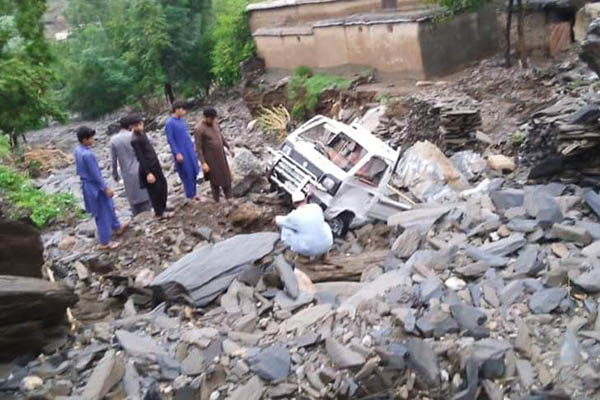
Screengrab of the devastation caused by a flash flood in Khyber-Pakhtunkhwa
Apart from outdated and often-misguided curricula, Pakistan’s educational sector has another enemy: nature. More than any other sector, Pakistan’s education infrastructure is adversely impacted by natural disasters: over 10,000 schools collapsed during the 2005 Kashmir earthquake, killing about 18,095 students and 853 teachers and educational staff, and injuring another 50,000. Similarly, this year’s devastating floods affected over 30 million people across 78 districts of the country, submerging about a fifth of Pakistan’s total land area—and damaging 10,348 schools, 23 colleges, and 21 vocational training facilities. Subsequently, around seven million students had their education disrupted, forcing the government to accommodate them in temporary tent schools. In Khyber-Pakhtunkhwa alone, overflowing of the River Swat and River Panjkora and their tributaries damaged over 3,297 houses, about 550 schools and 43 health facilities.
Natural calamities are especially troubling for the country’s north, where the norm is to build schools on land donated by locals who prefer to work in the same facility. As a consequence, schools are often built on land that is either cheap, agriculturally or commercially unproductive, or both—usually located close to the bank of a river or nullah, or at the base of a hill or mountain. Buildings constructed on such land are specifically prone to various hazards.
To overcome calamity-related disruption of education, the government must invest in resilient infrastructure and provide land that is not vulnerable to floods or similar hazards. This would not only be beneficial for the students, but also the economy, as the country cannot afford to keep rebuilding the same schools after every natural disaster. As an example, an official in Swat said the Government High School in Madyan, built for Rs. 70 million, was washed away by flash floods. Rebuilding in the same location would mean leaving the facility at risk of future disasters, while constructing disaster resilient infrastructure is a gamble, as the education department is hit by corruption and inefficiency; there is, in other words, no guarantee of children being safe in these ill-planned and poorly constructed state-managed schools. Accountability is also hampered by building contractors often being affiliated with ruling parties and having strong links in the bureaucracy and government, making the act of securing an education—for those who aren’t forced to just stay illiterate—a dicey prospect.
